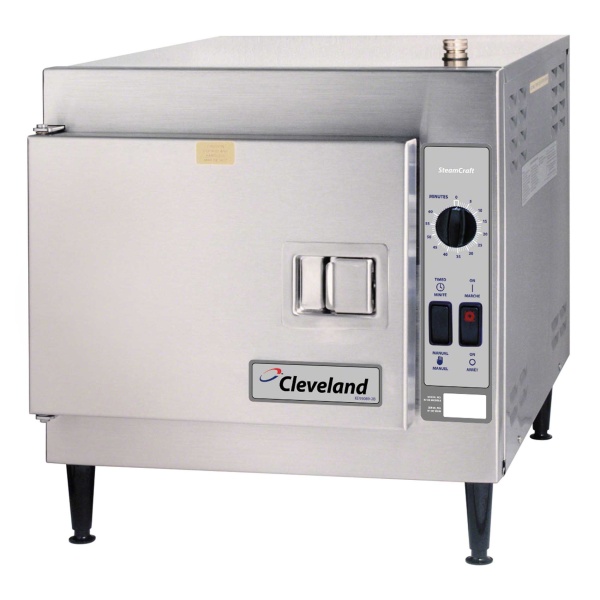The industrial steamer has become a vital tool in many kitchens. It streamlines production and takes the place of makeshift steamer pans on your range or flat-top grill. There are risks, however, in taking this key piece of equipment for granted and food-borne illness can arise as a result of lack of maintenance.
ServSafe MN Guide to a Food-Safe Steamer
Cleanliness is one of the keys to keeping the food safe that is prepared and reheated in your steamer. Since the basic premise of the steamer is to use moisture and heat to cook food without drying it out, it’s possible to create a haven for bacteria. Bacteria thrives and multiplies in a moist and warm environment. When your steamer is not in use, temperatures routinely lie within the danger zone.
We don’t want you to have to live in constant fear that everything that comes out of your steamer will be contaminated, so we have a few simple tips to help prevent harmful bacteria from contaminating your steamed product.
• Wipe up spills immediately
• Make sure door seals are cleaned daily
• Change the water frequently if you have a connectionless or countertop steamer model
Even if your steamer is in constant use for only one type of food product, it is still important to wipe out spills each time it is used. You may be cooking the same thing time and time again, but those spills can find their way into the drainage and steam circulation systems. It’s much easier to clean that up before food remnants find places to hide and begin cultivating potential contaminates.
Another frequent hiding place for bacteria lies in the seals of the steamer door. It’s a good idea to make sure that these are wiped down and sanitized on a daily basis to prevent contaminating particles from festering.
Our third item applies to steamers that are not connected to your facilities water system. Table top models with water drawers take a little more care when it comes to daily maintenance. The water levels in the system must be checked often if they are used frequently, and the water supply should be changed routinely to prevent bacteria from forming in the reserve tank.
There are also a few safety concerns that you should be aware of when using an industrial steamer. We will fully cover that issue in few weeks, when our blog will be discussing burn and scald prevention, as well as how to respond to burn accidents when they occur.
Every MN food manager’s approach to their equipment is different. At Safe Food Training, we’d like to know how you use the steamer in your facility. Is it an essential part of your operation, or is it something that is rarely used?



